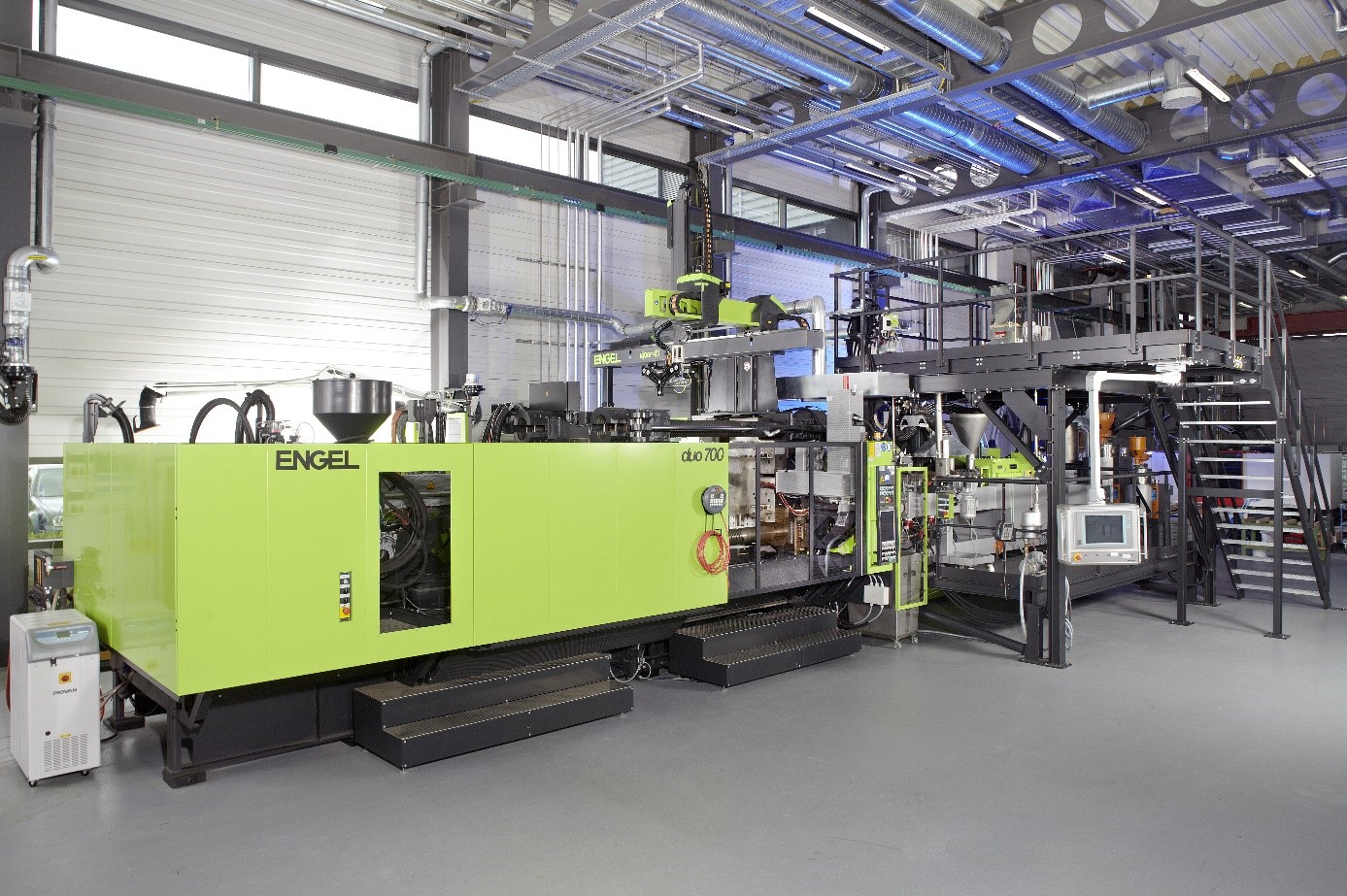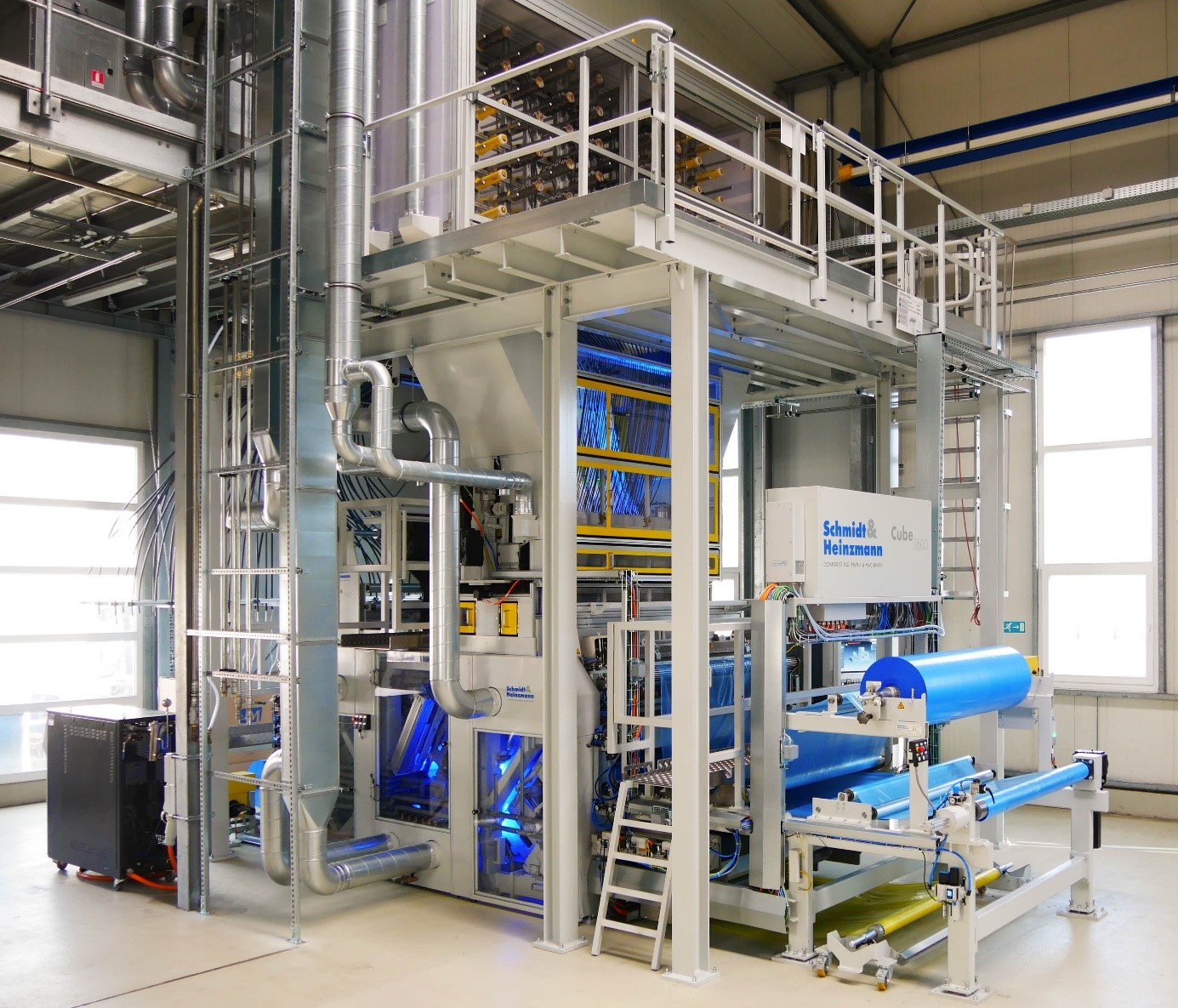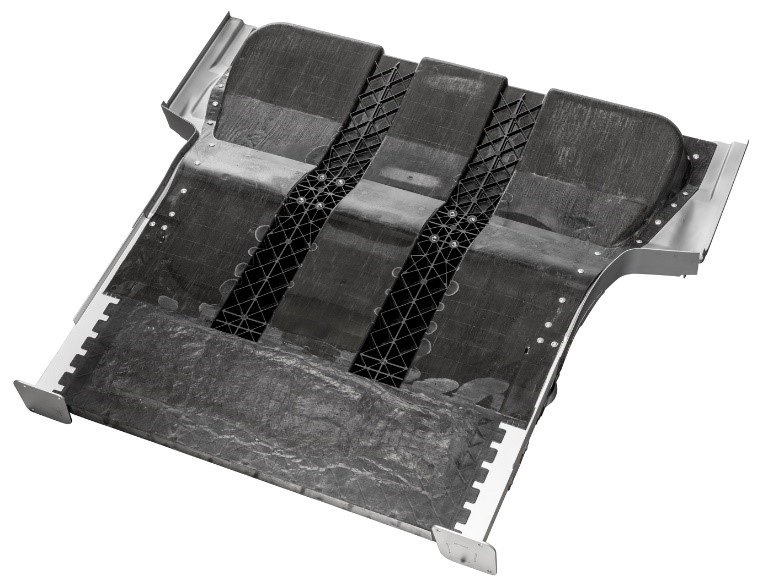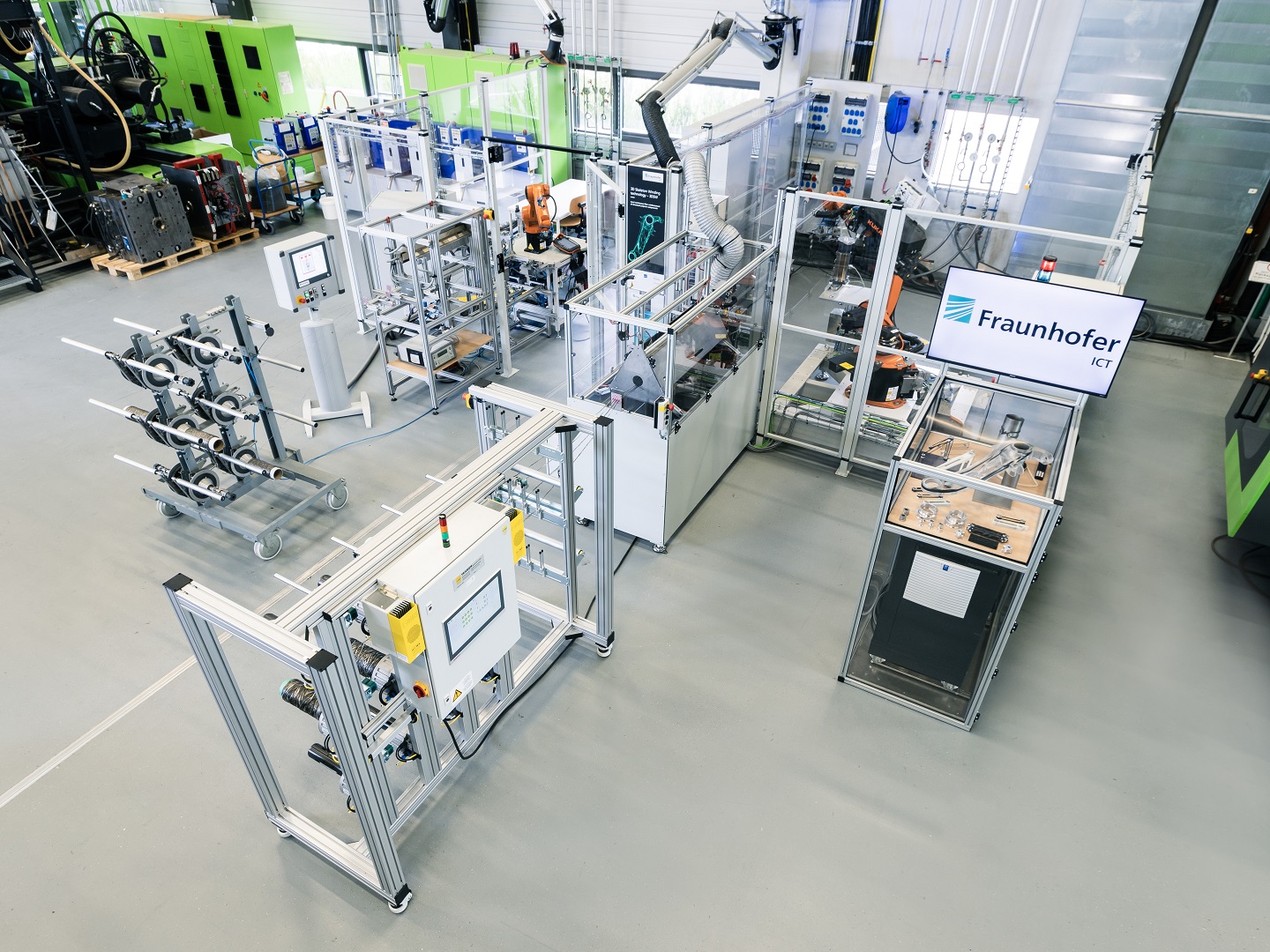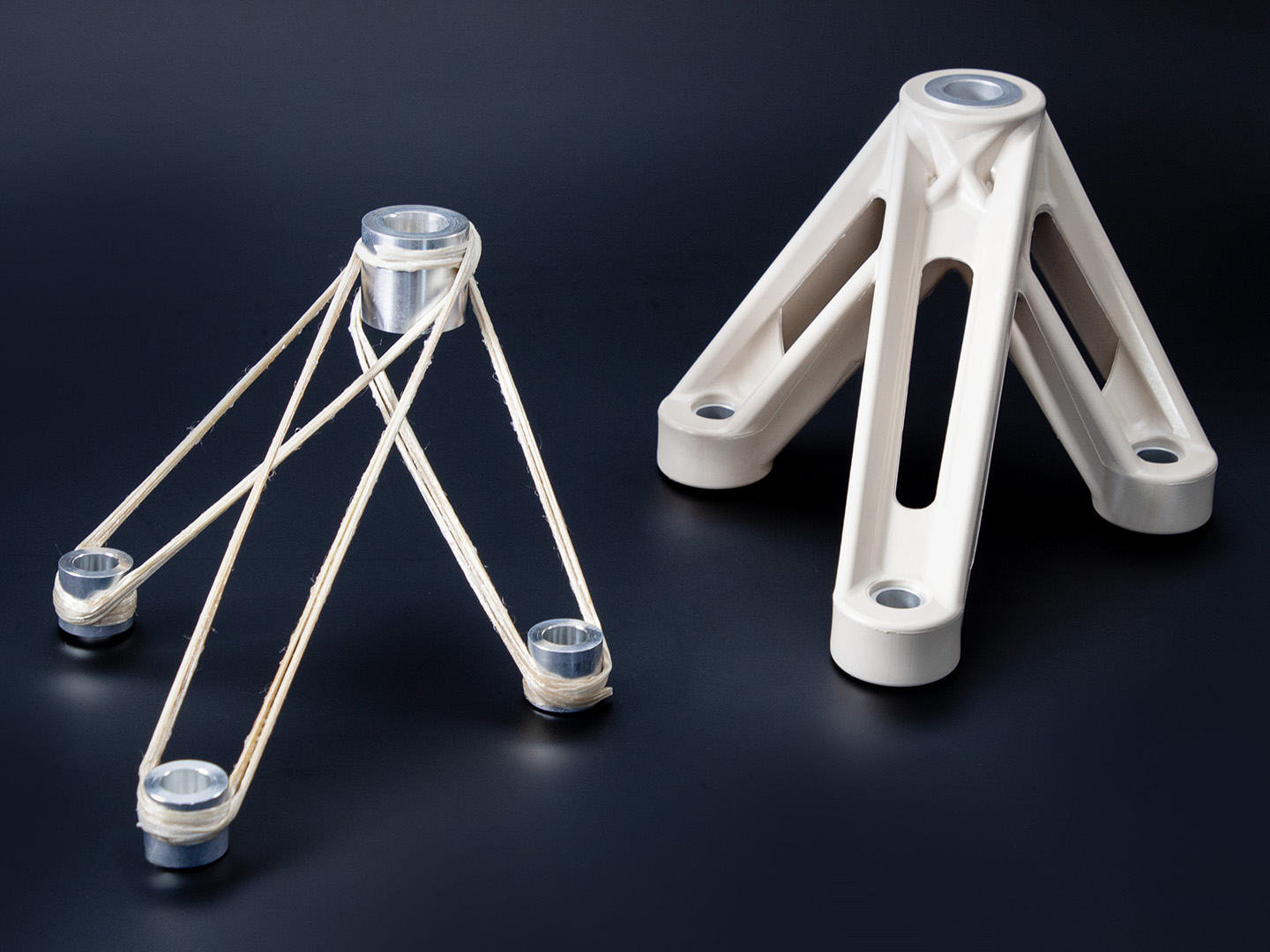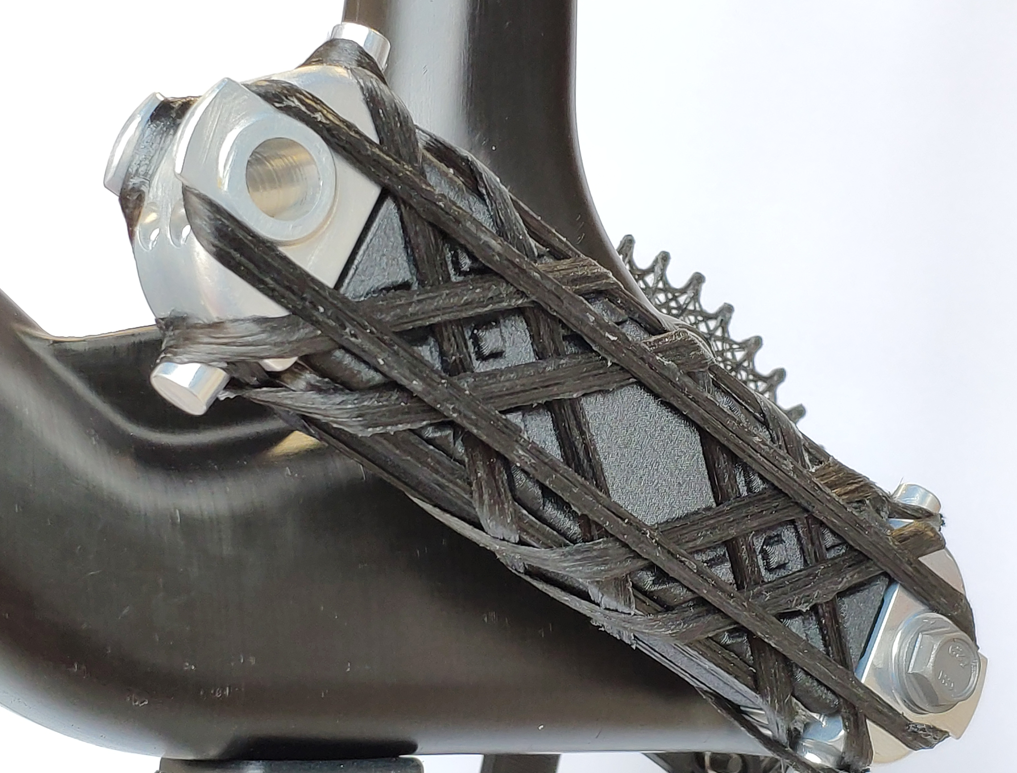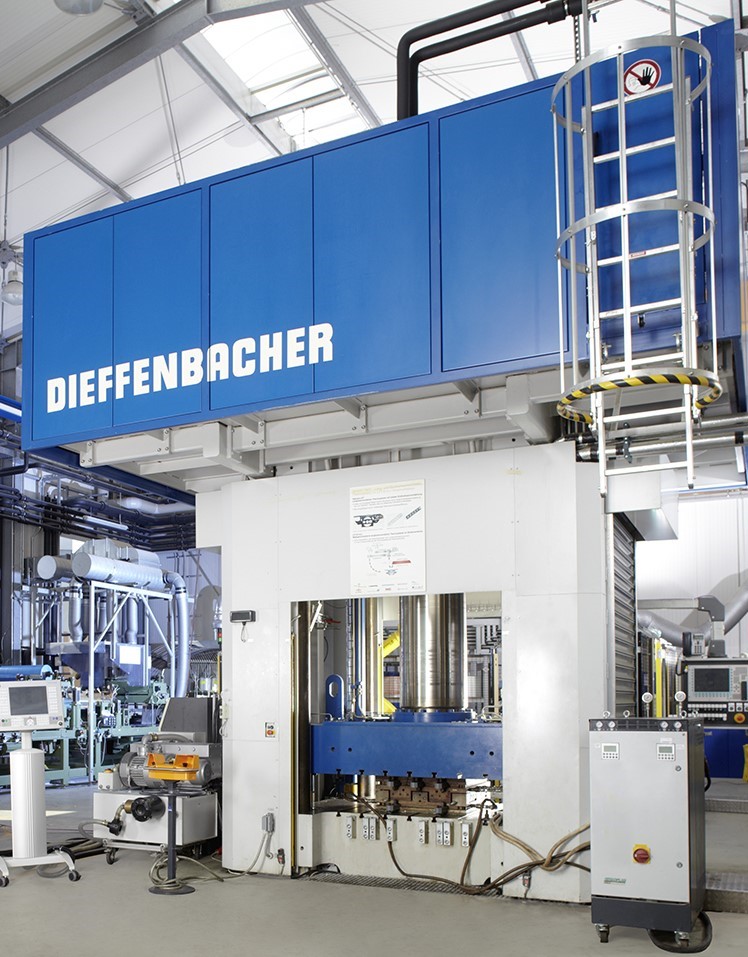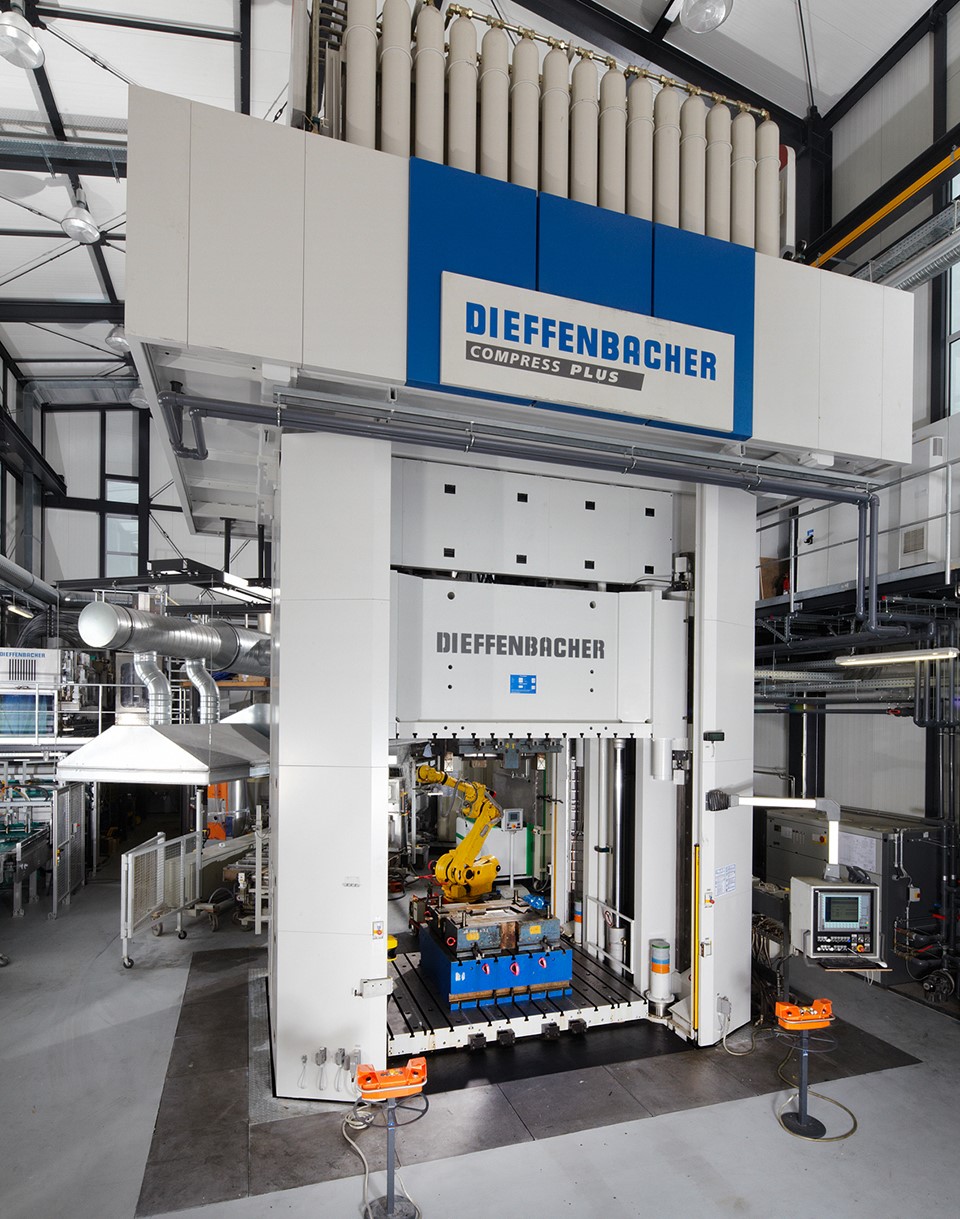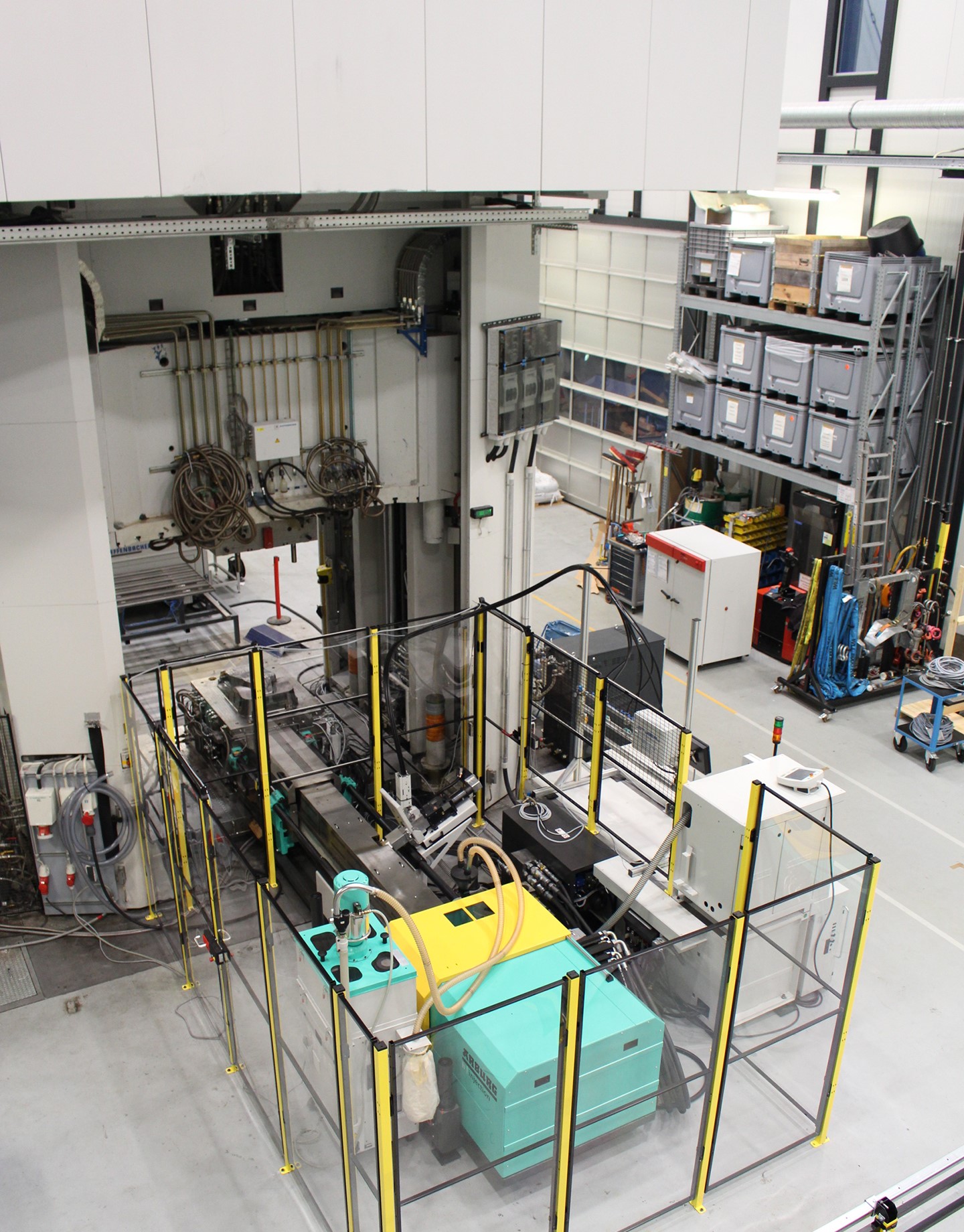The injection and compression molding group specializes in the development of processes and methods for flowable material systems that are suitable for large-scale production. In addition to standard injection and compression molding processes, the main focus lies on single-stage, resource- and energy-efficient direct processes as well as customized local continuous-fiber reinforcements and functionalized mono-material systems.
Injection and compression molding
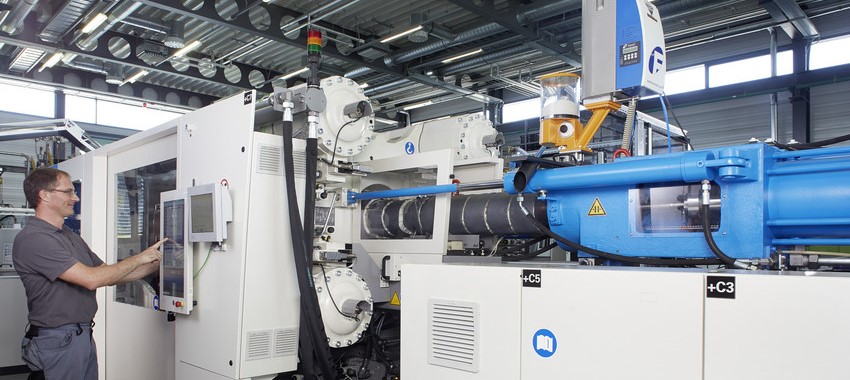
Thermoplastic injection molding process
Thermoplastic material systems are processed by injection molding at Fraunhofer ICT using state-of-the-art, high-volume plant technology. The focus is on the processing of high-performance plastics, and on hybridization technologies as well as thermoplastic foam injection molding (TSG) and the processing of long-fiber-reinforced thermoplastics (LFT).
In TSG processes, the polymer melt is loaded with a blowing agent, which causes the molding compound to foam inside the cavity after the injection process. Together with our partners, we develop material compositions and processes for foamed components using both chemical and physical (MuCell®) blowing agents.
Combining compounding and molding into one process opens new, innovative possibilities for plastics processors to improve the mechanical properties of components while simultaneously saving energy and material costs. By incorporating reinforcing fibers into the injection molding process, LFT materials can be processed in a direct process (LFT-D), which means that longer fiber lengths can be achieved than with a conventional granulate-based injection molding process.
In close cooperation with the research group for material development and compounding technologies, thermoplastic material systems are also developed, processed, and characterized. In addition to high-performance thermoplastics, emphasis is placed on sustainable, bio-based thermoplastics and recyclates.
Thermoset injection molding process
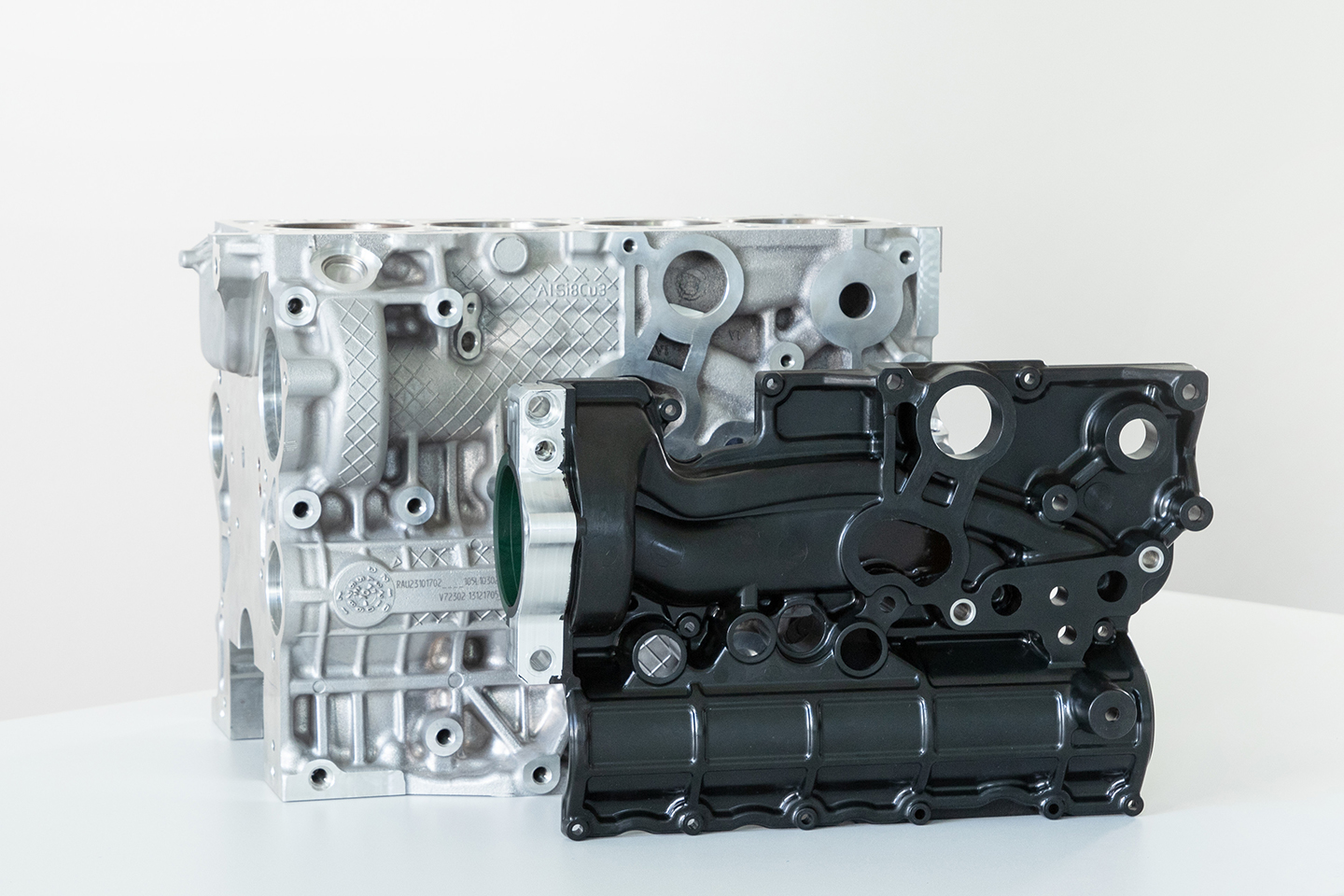
Unlike thermoplastics, which can be melted and reshaped several times, thermoset polymers undergo a chemical cross-linking reaction when heated, resulting in a solid and irreversible structure. This property gives thermoset materials outstanding strength and heat resistance, making them suitable for applications in demanding conditions. Thermoset materials also have excellent electrical insulation properties, making them ideal for applications in the electrical and electronics industry. They offer high dielectric strength, low electrical conductivity, and excellent flame resistance, which ensures the safety and reliability of electrical components. At Fraunhofer ICT, granular thermoset compounds with a shot volume of up to 800 ccm can be processed by injection molding. In the context of encapsulating electronic components, it will also be possible in the future to process extremely low-viscosity molding compounds in transfer molding up to a shot volume of 1400 ccm.
Sheet molding compound (SMC)
The thermoset composite material sheet molding compound (SMC) enables the use of lightweight construction solutions in application areas that are characterized by high mechanical, chemical and thermal loads. Research activities at Fraunhofer ICT focus on the development of materials and processes for the compounding and compression molding of SMC. This includes the development of formulations, the use of new resin systems and reinforcing fibers as well as the optimization and digitalization of process control. Both conventional thermoset and thermoplastic resin systems are used and further developed for applications in the automotive and commercial vehicle industries.
Long-fiber-reinforced thermoplastics in the direct process (LFT-D)
In the field of long-fiber-reinforced thermoplastics, research at Fraunhofer ICT focuses on material and process development in the LFT direct process (LFT-D) and on the compression molding of thermoplastic compounds. The gentle incorporation of reinforcing fibers in the efficient two-extruder process, combined with low shear forces in the extrusion process, means that longer fiber lengths can be achieved than in comparable injection molding processes. All common engineering thermoplastics, reinforcing fibers and recyclates can be processed in the LFT-D process. With additional equipment such as IR heating fields and ovens, Fraunhofer ICT can produce large-area structures such as underbody panels, battery housings and covers. In addition to a 6,300 kN press, component prototyping can also be carried out on a hydraulic press with a pressing force of 36,000 kN.
3D skeleton winding (3DSW)
3DSW is a robot-based 3D filament winding process for the fully automated production of continuous-fiber-reinforced skeleton structures with complex geometries and short cycle times. Together with our partners, we develop manufacturing processes and systems as well as design methods to fabricate thermoplastically impregnated fiber skeleton structures, which are used, for example, for the local reinforcement of structural injection-molded components or as lightweight skeleton components.
Functionalization of continuous-fiber-reinforced semi-finished products with discontinuous-fiber-reinforced thermoplastics
Combining processes for the production of continuous-fiber-reinforced semi-finished products such as organo sheets or sandwich structures with the injection molding process or LFT-D compression molding opens up a wide range of applications for the efficient and large-scale functionalization of continuous-fiber-reinforced semi-finished products. The combination of the different processes allows the advantages of continuous-fiber reinforcement to be exploited with the complex geometries possible in injection molding or compression molding. In addition to two hydraulic presses (6,300 kN and 36,000 kN press force), a bolt-on injection unit (max. dosing volume 2,290 ccm) is also available, which can be connected directly to the 36,000 kN press.
At Fraunhofer ICT, we offer our project partners and customers the opportunity to implement specific automation solutions and process configurations as prototypes. Our modern facilities and technical experts are at your disposal to develop customized solutions for your individual requirements. We have a wide range of plate tools available for material testing and parameter studies. We can also combine locally or fully-continuous-fiber-reinforced semi-finished products with discontinuous-fiber-reinforced compression molding or injection molding materials through co-molding. We have access to a wide range of tools with generic geometries and application-oriented component demonstrators.
Fraunhofer Cluster of Excellence
- Fraunhofer Cluster of Excellence Circular Plastics Economy CCPE (fraunhofer.de)
 Fraunhofer Institute for Chemical Technology ICT
Fraunhofer Institute for Chemical Technology ICT